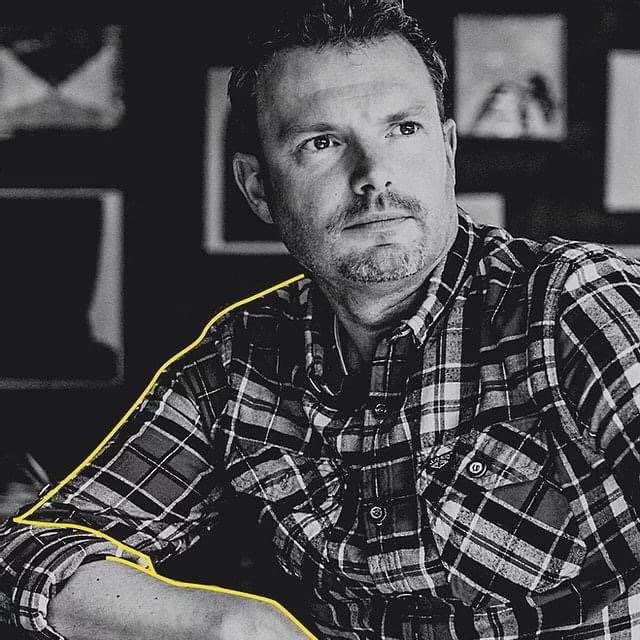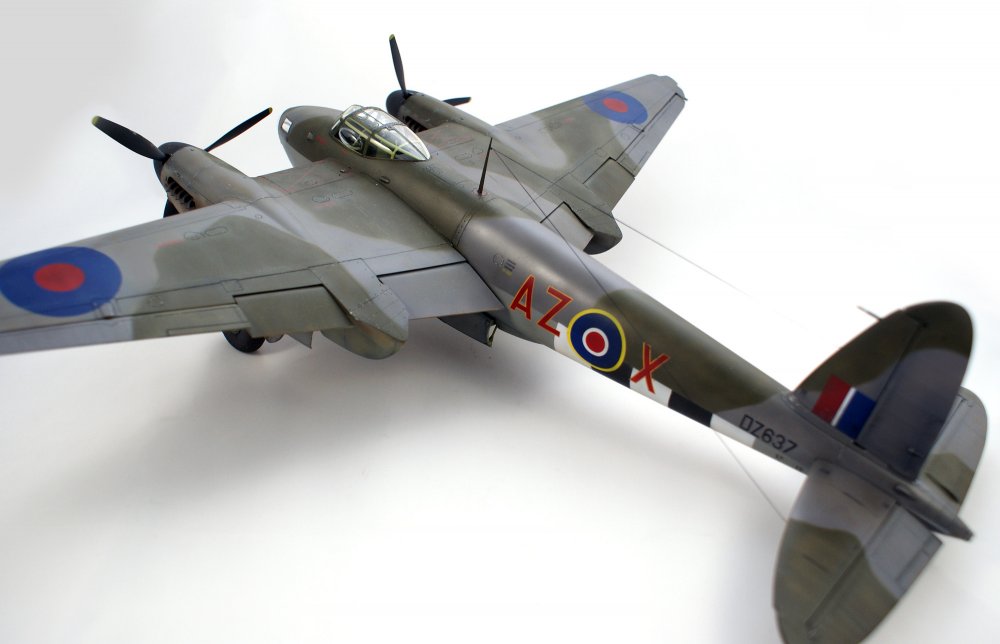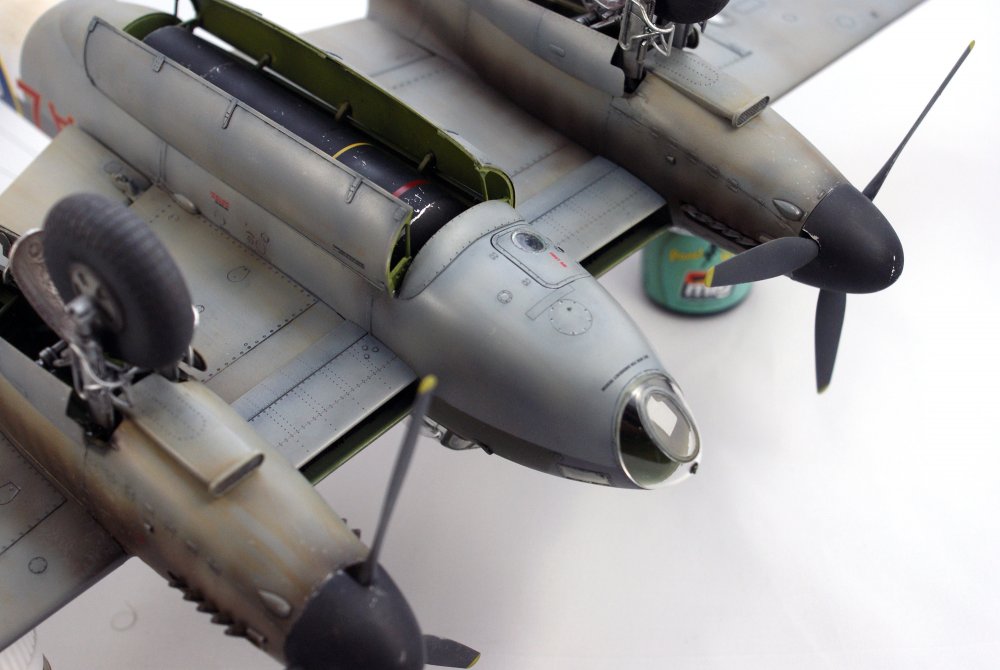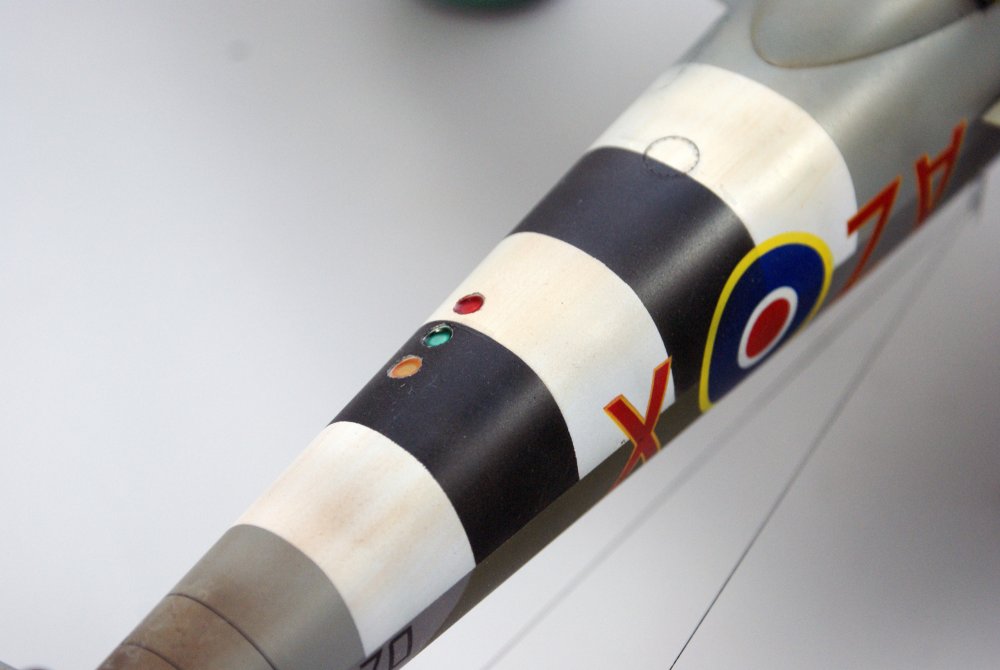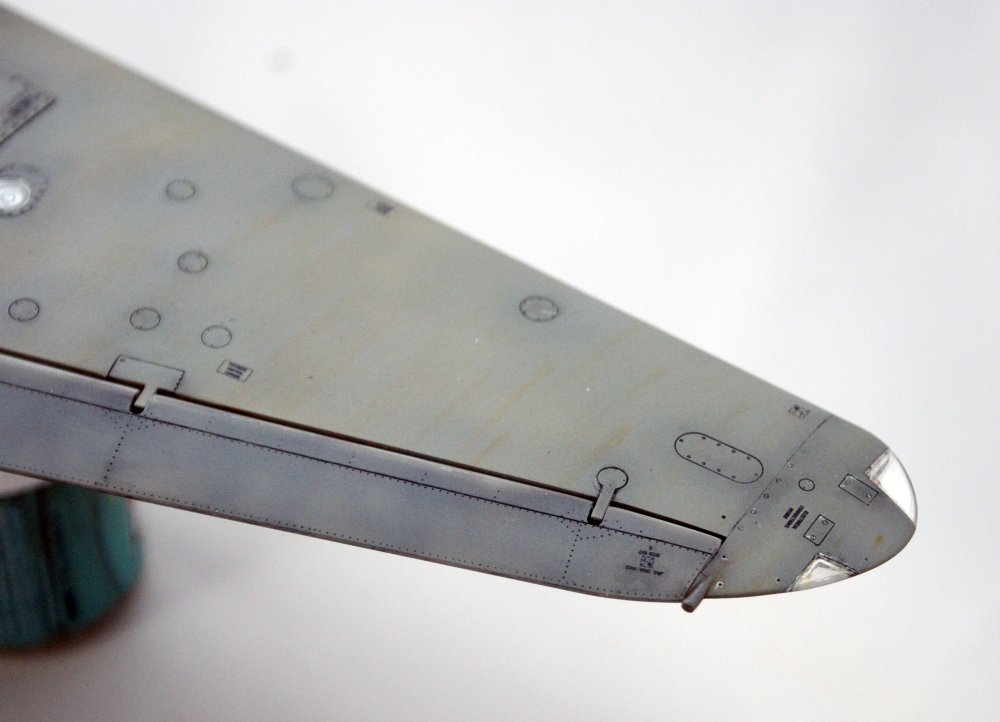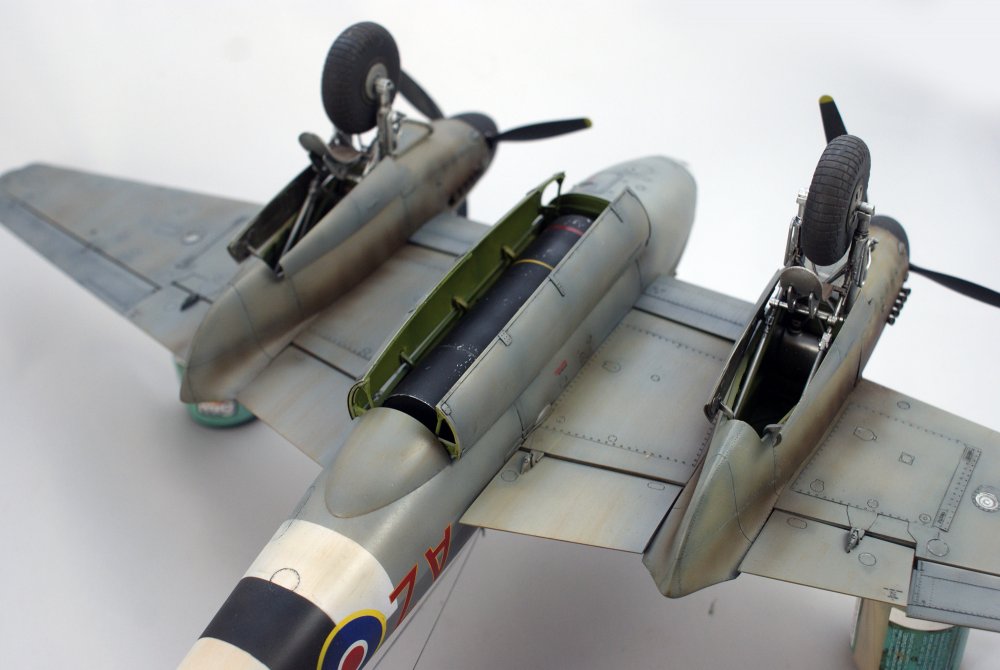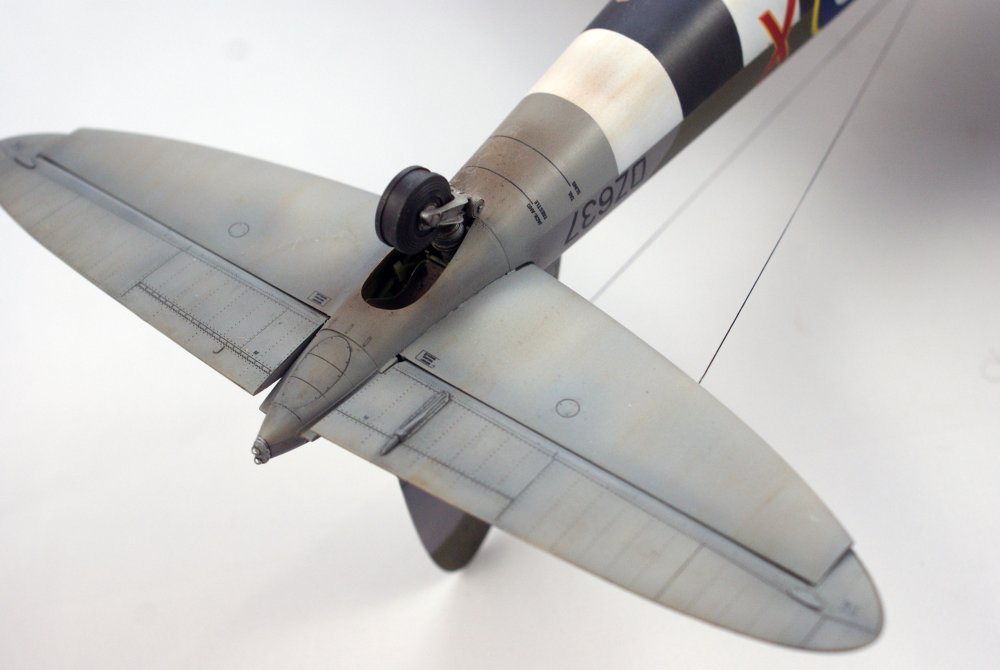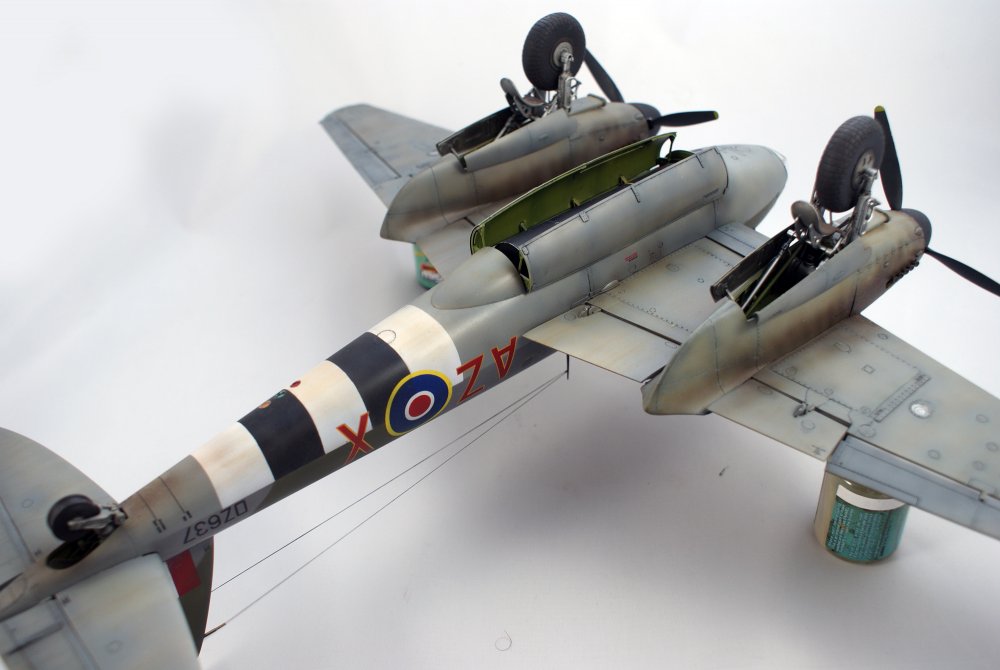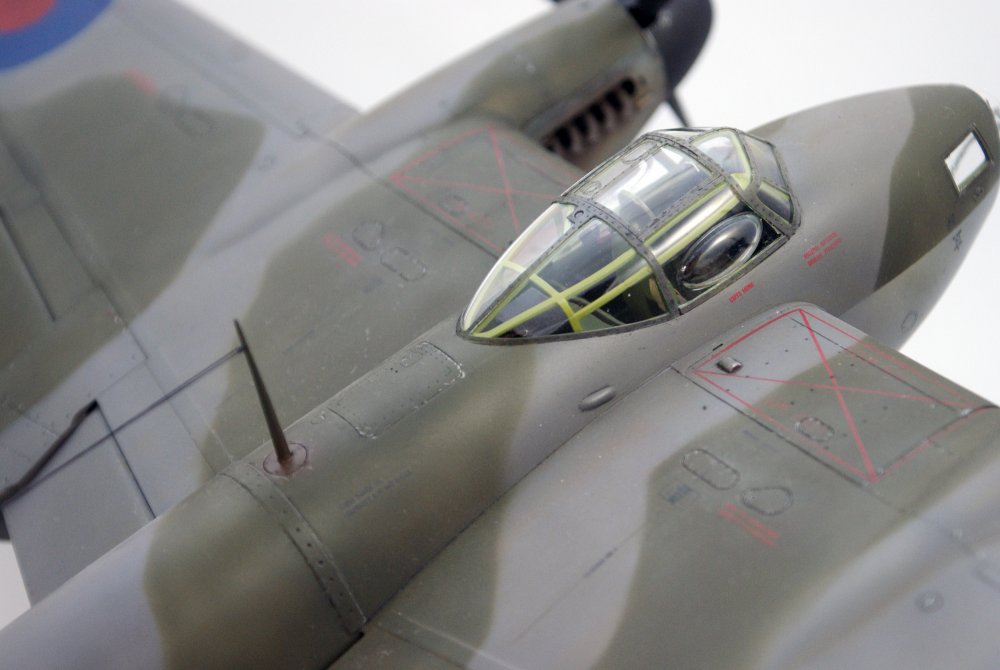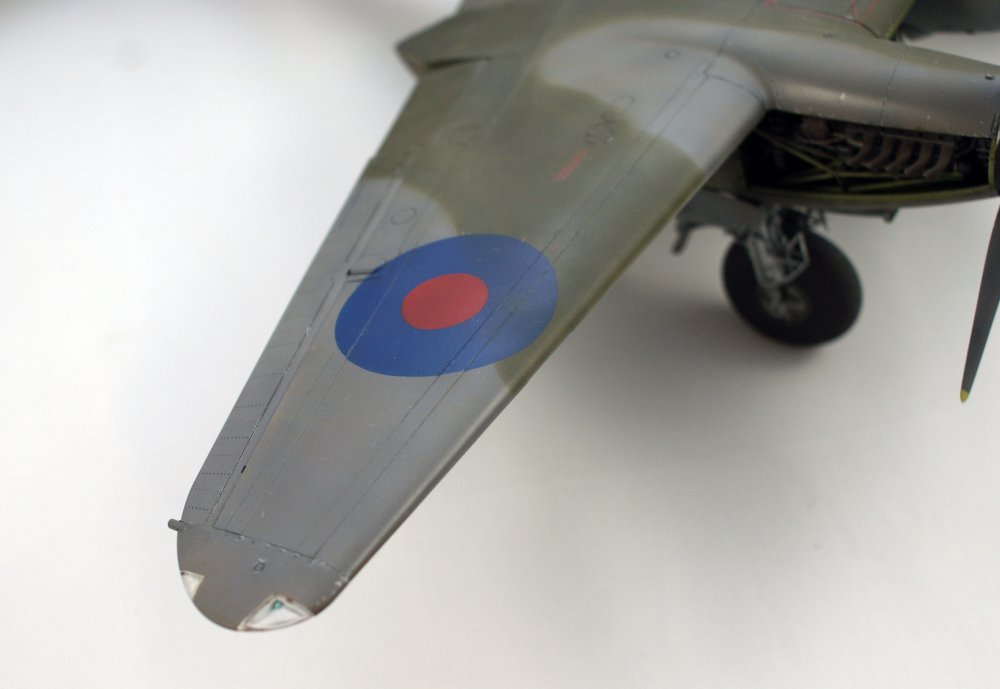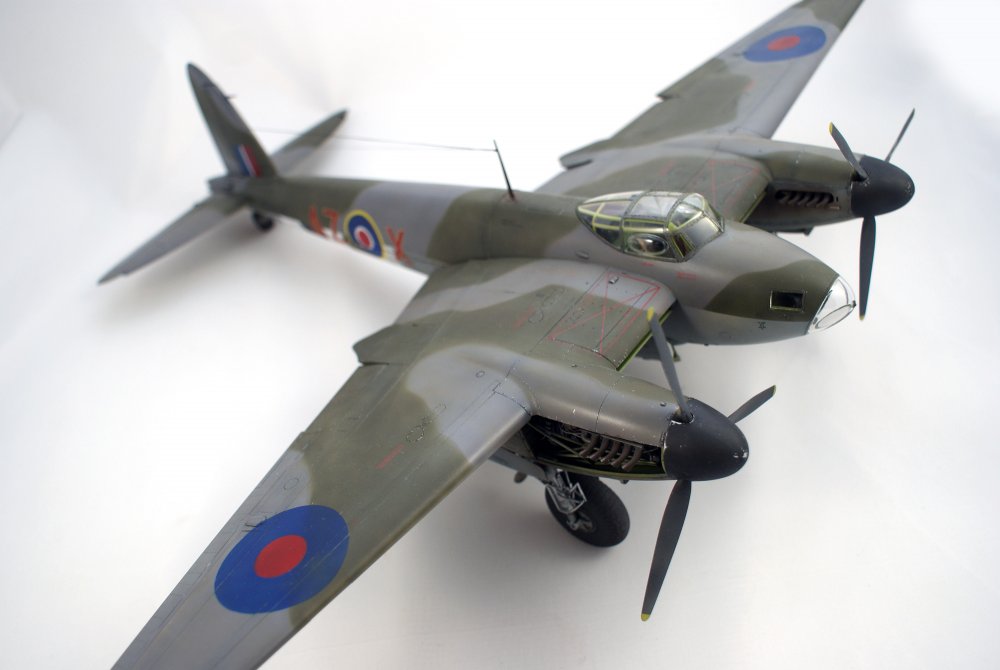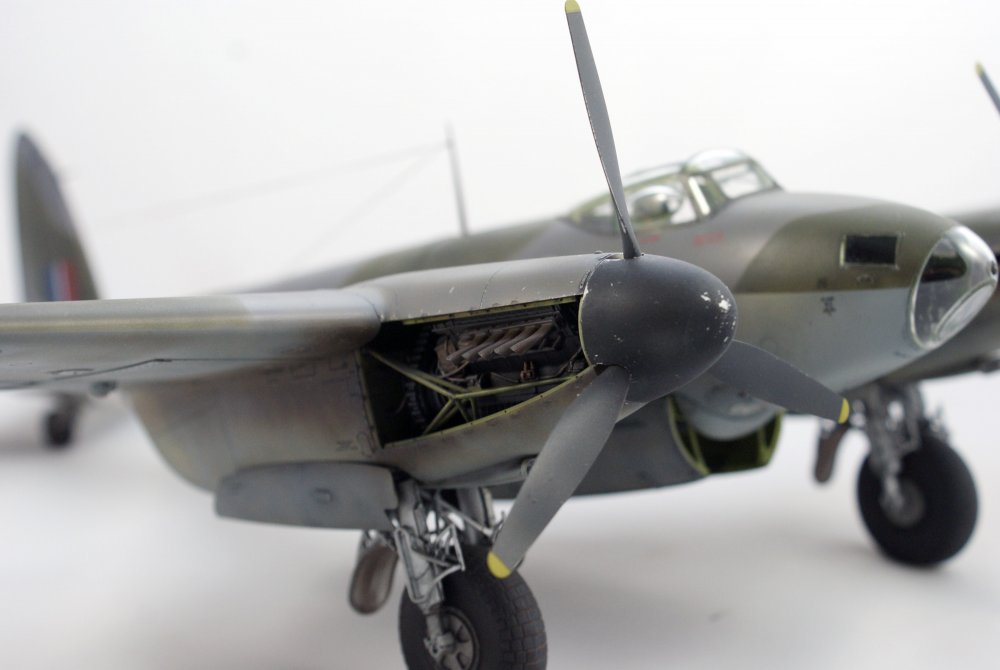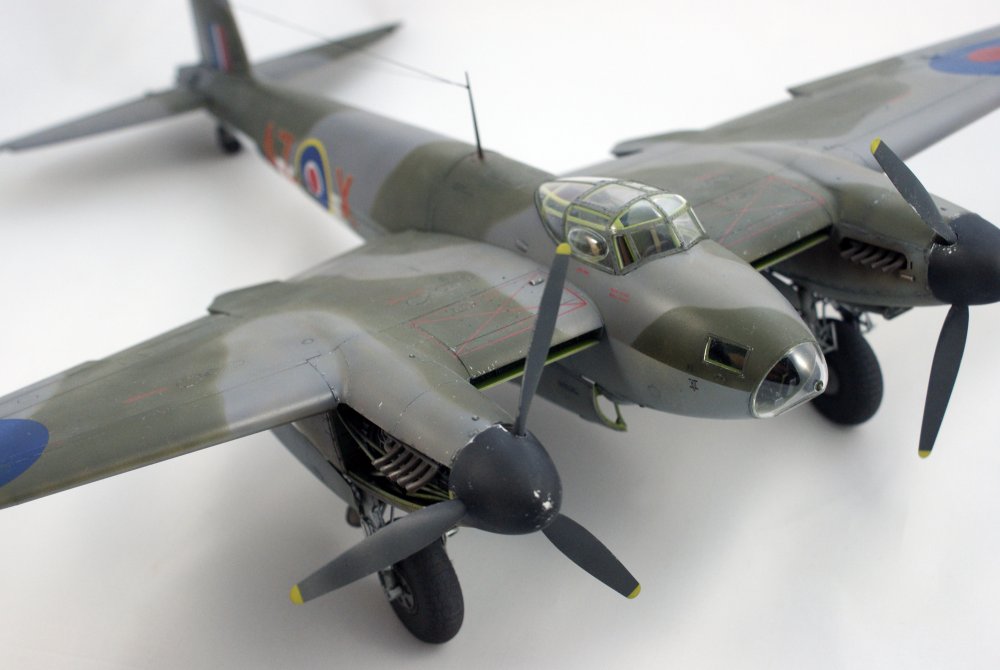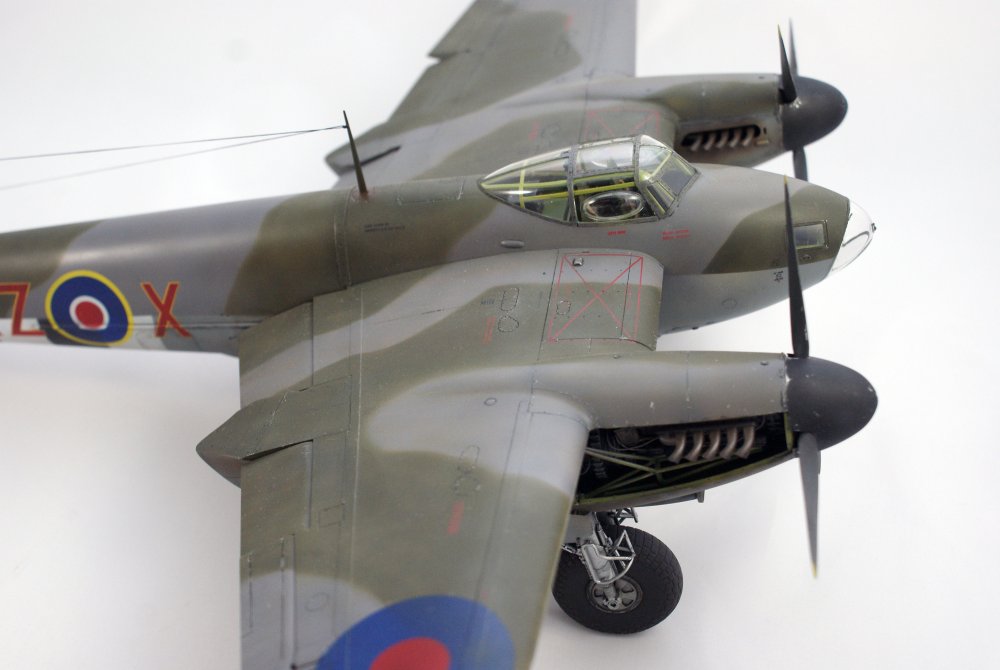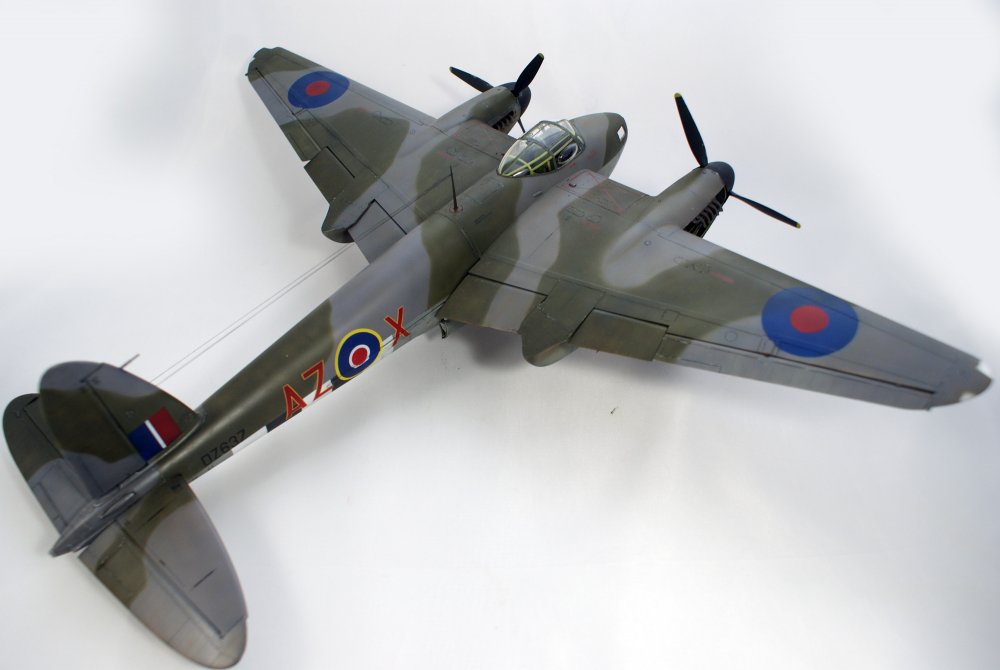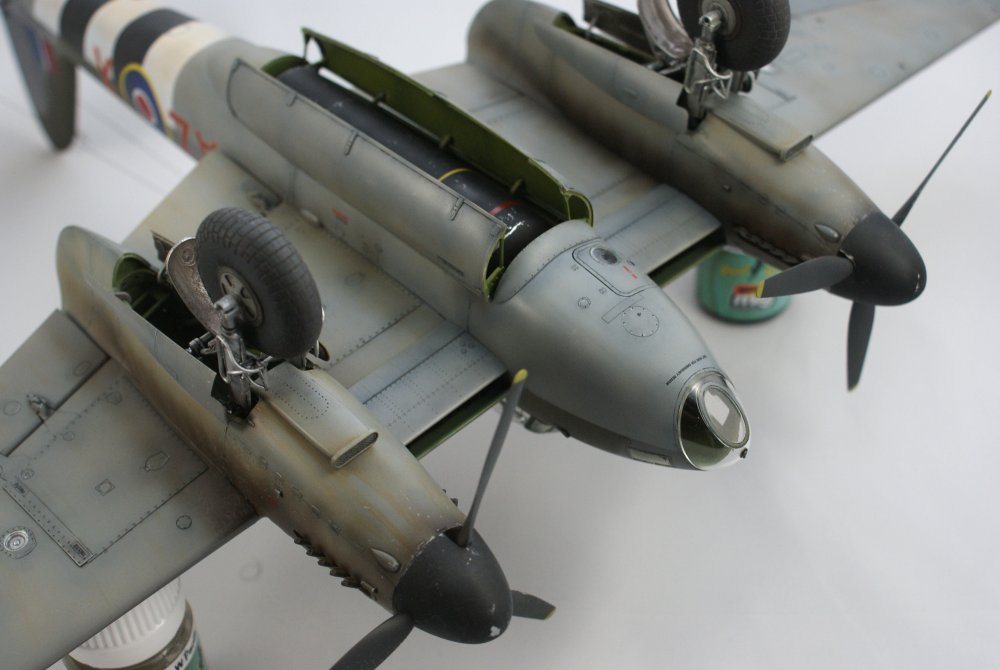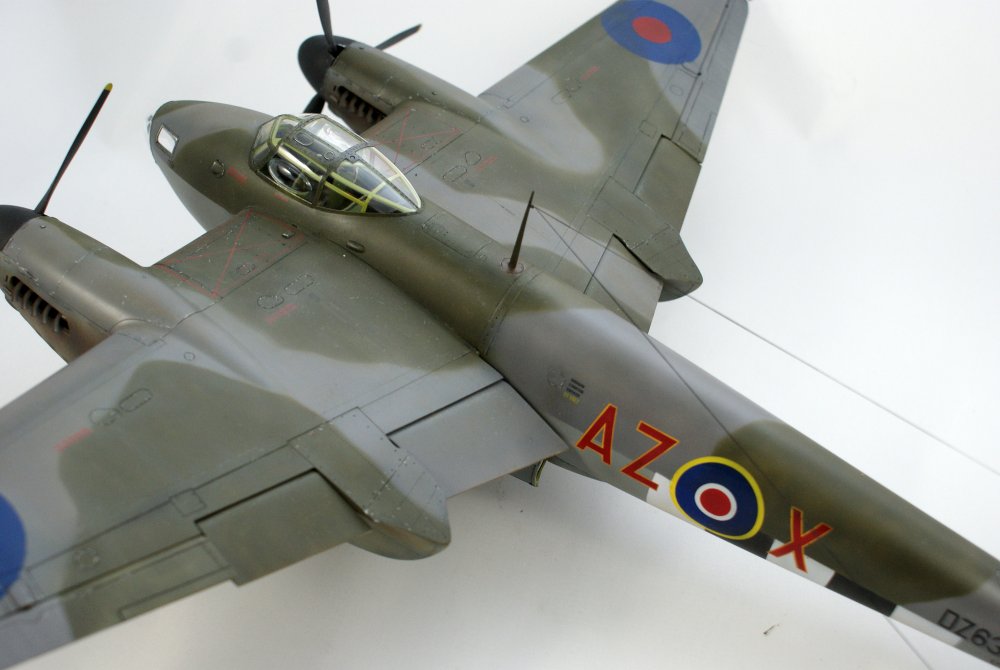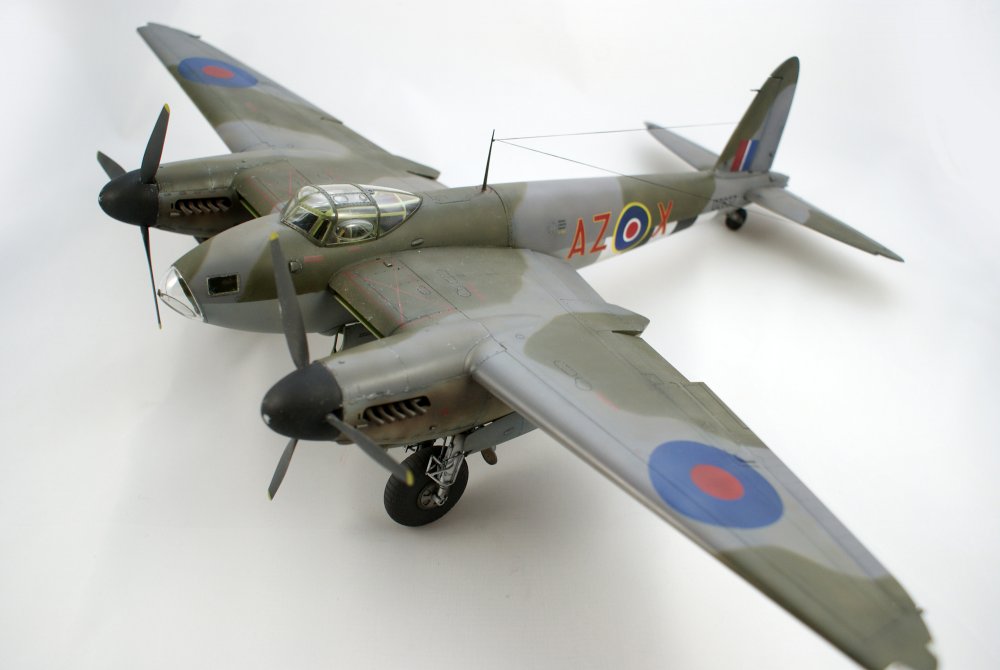-
Posts
4,779 -
Joined
-
Last visited
Content Type
Profiles
Forums
Events
Gallery
Everything posted by JeroenPeters
-

Wingnut Wings Felixstowe F.2a & Hansa-Brandenburg W.29 Wingnut Wings
JeroenPeters replied to Fran's topic in Aircraft Reviews
Nice one Fran!- 5 replies
-
- 1
-

-
- Duellist
- Felixstowe
-
(and 3 more)
Tagged with:
-

Ju-88C-2 "4D+FH" in pieces
JeroenPeters replied to JeroenPeters's topic in LSM 1/35 and Larger Work In Progress
Using the Kagero 1/32 drawings for the wing root detail. Need to describe. Rivet. Then add the details. -
Great detail on this kit. You don't see them getting built too often though. What scheme are you doing?
-

Ju-88C-2 "4D+FH" in pieces
JeroenPeters replied to JeroenPeters's topic in LSM 1/35 and Larger Work In Progress
Cheers Nick! Made a little bit of progress today. Revell has the wing roots moulded to the fuselage. Had to cut them off and fill the holes with green card. And what a lovely sound to hear overhead when cutting plastic! -

Ju-88C-2 "4D+FH" in pieces
JeroenPeters replied to JeroenPeters's topic in LSM 1/35 and Larger Work In Progress
Hehe, Here's some old school scratching. Added the MG17 breeches and the first wiring. -

Henri Daehne 1/32 Props & Spinner Correction Sets
JeroenPeters replied to Iceman's topic in Modelling Discussion
Worth every buck... You're welcome! -

Henri Daehne 1/32 Props & Spinner Correction Sets
JeroenPeters replied to Iceman's topic in Modelling Discussion
Here you go! http://www.largescaleplanes.com/reviews/review.php?rid=1257 -

Wingnut Wings 1/32 Hannover CLII
JeroenPeters replied to tigger's topic in WNW and WW1 Ready for Inspection'
Lovely Vibrant scheme. Very well done mate! -

Revell 1/32 Arado 196B
JeroenPeters replied to tigger's topic in LSM 1/32 and Larger Aircraft Ready for Inspection
So cool... Still havent gotten around to build one. Let alone two! Beautiful pair.. -

Ju-88C-2 "4D+FH" in pieces
JeroenPeters replied to JeroenPeters's topic in LSM 1/35 and Larger Work In Progress
Ok ok! With the Mossie out of the way I started cutting resin. Since I'm only sharing the cockpit details with you guys and most of it won't be visible through the top canopy I won't bother replacing the MG17's. However I will extend them more to the rear since the gun breaches are missing... The MG151 gun however is very visible, so I cut out the entire centre resin section with the MG151 breach and replaced it with a fresh more detailed Aires one. -
Hi All, Finally finished the cookie monster! Basically a test shot that misses the fabric patches surface details and didn't include decals. I used Mal's perfect masks for the codes, roundels and No Step indications and also the ProfiModeller stencil decals. These include some typo's and are huge in numbers, but they definitely add some life to the otherwise dull surface of the wooden wonder. I took my time with the weathering part. Using a grey sharp colour pencil for scratches and a silver Prisma pencil for the scratches on aluminium parts, like the cowlings. Overall I'm pleased with the result and love the sleek lines of this machine. At the time I started this kit little after market was available, so limited to the HGW sutton harnesses and ProfiModeller Pitot tube. Ah! And almost forgot. I used Airscale decals for the instrument panel. Cheers! Next!
-
Cheers guys! We do our best!
-

HK Models 1/32 HK Models Mosquito B Mk.IV
JeroenPeters replied to JeroenPeters's topic in LSM 1/35 and Larger Work In Progress
No. Yes. But no.... Yes! Almost.. -
True. But this is the same on forums like Large Scale Planes. Since LSM is much younger, i reckon the percentage of active members is relatively higher. In the end it's the spirit, atmosphere and content that matters. Right?
-

HK Models 1/32 HK Models Mosquito B Mk.IV
JeroenPeters replied to JeroenPeters's topic in LSM 1/35 and Larger Work In Progress
That's a huge compliment coming from you Peter!! Cheers! -
Hi fellow LSM-bers! I can remember, not so long ago, stepping into this venture called LSM. It was Jim Hatch that invited me and asked me to help out and I have enjoyed doing so every single day. There have been ups and downs. Highs and lows. Working alongside HK Models. Getting our logo on the Mossie packaging must have been a high... As is Welcoming our 2000th member! I am proud to say that we have built a name for ourselves, producing the highest caliber reviews around. I am proud of Fran and our team-up with Wingnut Wings Fans. Because lets be honest... they belong with us! Proud of all the modelers that simply build, share and contribute. So thank you to all! Keep joining, posting, enjoy and last but not least.... Build Large Scale!! Cheers, Jeroen
-

HK Models 1/32 HK Models Mosquito B Mk.IV
JeroenPeters replied to JeroenPeters's topic in LSM 1/35 and Larger Work In Progress
If i can fit all in my Alfa Romeo Mito... Yes. -

HK Models 1/32 HK Models Mosquito B Mk.IV
JeroenPeters replied to JeroenPeters's topic in LSM 1/35 and Larger Work In Progress
I'm just gonna push on and not look back -
Thats a pretty cool model you've built from a pretty cool kit! Love the weathering.
-

RB Productions 1:32 Yokosuka MXY7 Ohka Type 22
JeroenPeters replied to James H's topic in Aircraft Reviews
Wow... amazing kit. Really looking forward to see how this stocks up against the HPH offering, even if it is a totally different version! -

Flyhawk 1:72 Pz.Kpfw II Ausf. J (VK16.01)
JeroenPeters replied to James H's topic in Non-LSM Reviews
Incredible detail AND boxing. I can imagine this level of detail being credulous in 1/35...- 5 replies
-
- 2
-

-
- panzer
- pz.kpfw ii
-
(and 1 more)
Tagged with:
-

HK Models 1/32 HK Models Mosquito B Mk.IV
JeroenPeters replied to JeroenPeters's topic in LSM 1/35 and Larger Work In Progress
Hi Mal, From the photo's Erik posted I don't get the impression the camp is inverted... Right? I know Maciej is involved in drawing the scheme represented in the instructions. I know he does his research well, which caused me to follow blind. The white tipped grey spinners i also spotted in this profile: One thing i am missing on the model is the really small bump or fairing on the nose. See above. Anyone know what it is?

